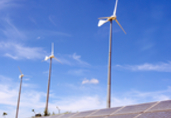Bahrain has weathered the effects of a difficult global economic period well, and its recovery has been solid, demonstrating the strength and flexibility of its economy. The government’s drive to diversify away from oil and gas dependence has been renewed, and a wealth of ambitious non-oil sector projects – from infrastructure to renewable energy technology – is now in the pipeline.
Displaying 2473 - 2478 of 2619
South Africa lies on the southern tip of Africa, occupying 1.22m sq km with some 2800 km of coastline along the Atlantic and Indian Oceans. The so-called “Rainbow Nation” has a population of around 50.5m and is a melting pot of ethnicities, cultures and languages that reflect its rich and tumultuous history.
Economic update | Kuwait: Growth in the pipeline
21 May 2012
Plans for a major new refinery and record exports to Asia have led to heady estimates of Kuwait’s oil revenues for 2012 and the sector is looking to innovative techniques to extract huge reserves of heavy oil.
Mientras la economía del Perú sigue experimentando un rápido crecimiento, un obstáculo se asoma en un futuro no muy distante. A menos que se tomen medidas rápidas y serias, el país pronto sufrirá una escasez de energía importante. Jorge Merino, Ministro de Energía y Minas, dijo a la prensa local que el país actualmente requiere 5000 MW anuales. "Si queremos seguir creciendo a un ritmo superior al 7%, la demanda de electricidad se duplicará en los próximos 10 años", dijo.
Economic update | Thailand: Fuelling up
17 May 2012
Thai consumers are beginning to feel the effects of the government’s decision to liberalise compressed natural gas (CNG) prices with the aim of bringing retail costs in line with the global market and potentially freeing up government funds for use in other sectors.
In subtropical South-east Asian climates, where air conditioning accounts for about 50% of a building’s energy use and up to 30% of operating costs, energy efficiency requires keeping cold air inside and hot air out. Some sector participants estimate that improvements to the “building envelope” can reduce the energy required to cool a building by 50-80%.






